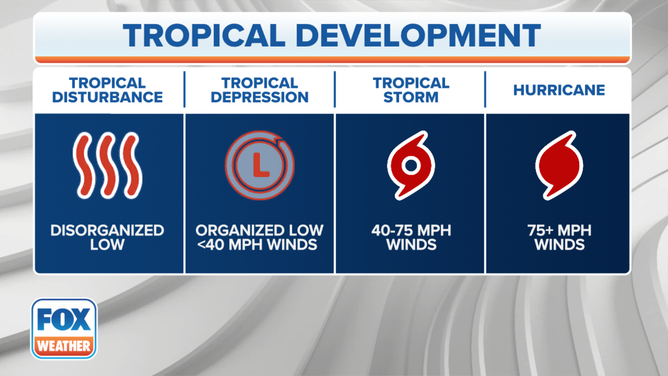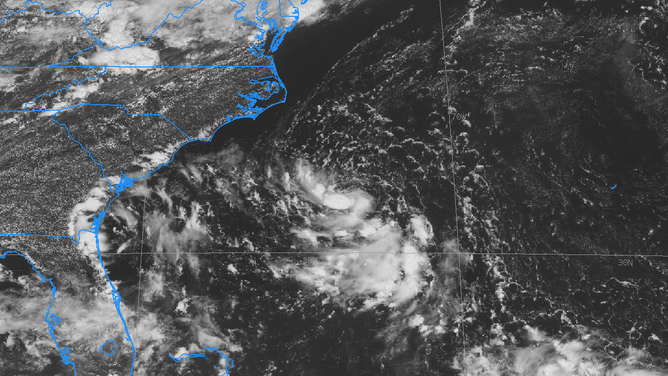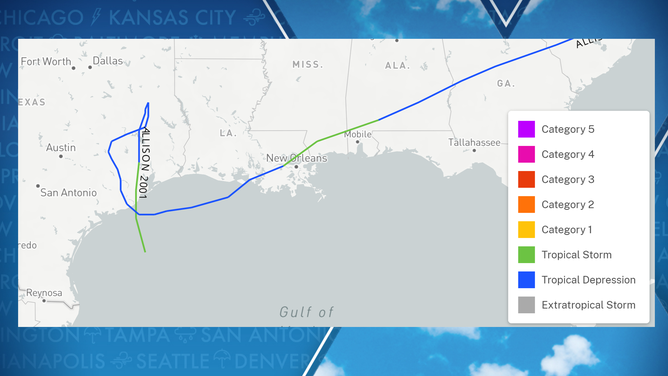What is a tropical depression?
A tropical depression is the weakest form of a cyclone and is less severe than a tropical storm or a hurricane. The Atlantic basin hurricane season runs from June 1 to November 30.
What's the difference between a Tropical Depression, Tropical Storm, and Hurricane?
Tropical Depressions, Tropical Storms, and Hurricanes all have different characteristics that are compared and contrasted in this video
When a thunderstorm complex develops a low-pressure circulation, the National Hurricane Center identifies the system as a tropical depression - the weakest form of any tropical cyclone but don’t let its lack of strength surprise you.
A tropical depression has maximum sustained winds of 38 mph or less, and unlike tropical storms and hurricanes, tropical depressions are identified with numbers and not names.
Numbers are assigned in sequential order, and the season's first tropical depression is identified as Tropical Depression One or TD 1. This will be followed by Tropical Depression Two, Tropical Depression Three, etc., and the sequential designations will continue until the season ends.
Tropical depressions form in the same regions as tropical storms and hurricanes develop in and are often the beginning stages of significant cyclones.

The stages of tropical development.
(FOX Weather)
7 FACTS TO KNOW ABOUT HURRICANES
Hurricane experts say water temperatures of at least 78 – 80 °F are typically needed to produce enough heat energy for these cyclones to develop.
The NHC says most form between 5 and 30 degrees North latitude and work westward until a change in the weather pattern curves the cyclone to the north and northeast.
Despite their usual disorganization, the effects of tropical depressions can be severe and produce heavy rainfall and tornadoes.

Tropical Depression Three in the Atlantic Ocean southeast of Cape Hatteras in 2018.
(NOAA)
If a tropical depression is slow-moving, it can produce deadly flashing and lead to damage amounts similar to a tropical storm or a hurricane.
Once sustained winds reach 39 mph or greater, the NHC upgrades the cyclone to a tropical storm, and the system earns a name from a list of 21 names designated for the season.
HERE’S WHY THE ATLANTIC HURRICANE SEASON RUNS FROM JUNE TO NOVEMBER
In 2001, a weakening Tropical Storm Allison produced most of its damage as a tropical depression over Texas.
The cyclone spent four days over the Lone Star State, dropping nearly 37 inches of rain in Houston and spawning several tornadoes.
Damage estimated topped $5 billion, and the system was responsible for 41 deaths along the Gulf Coast.
There is no time limit for how long a cyclone can be categorized as a tropical depression.
Some last for only hours, and others can be around for days or even weeks – it all depends on how long its thunderstorms can keep the center of circulation around and winds remain sustained at a sufficient rate.




